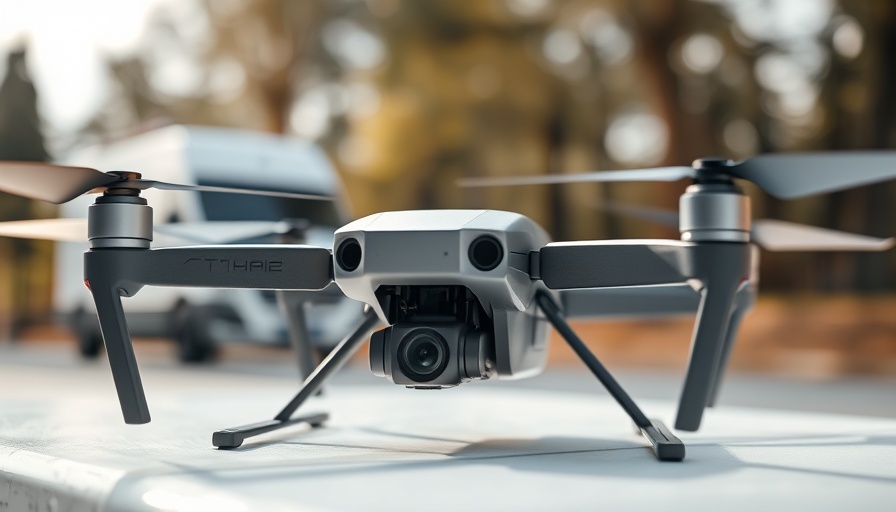
How Security Drones Are Changing the Game for Auto Dealerships
In the wake of increasing thefts at auto dealerships, innovative technology is stepping in to protect valuable assets. Recently, Titan Protection and Consulting successfully implemented a security drone at Molle Toyota in Kansas City, marking a significant breakthrough in commercial drone applications. This first-of-its-kind deployment came just two weeks after receiving a nationwide FAA beyond visual line of sight (BVLOS) waiver, allowing Titan to operate surveillance drones across various locations without site-specific approvals.
The Encounter That Changed Everything
On July 27, two criminals targeted a black Corvette parked in a dimly lit corner of the Molle Toyota dealership. Upon shattering the window, they were confronted by Titan's autonomous drone, which quickly diverted from its patrol path to assess the situation. Armed with real-time aerial intelligence and remote monitoring by Titan's pilots, the suspects abandoned their plan and fled the scene. This incident marks an essential turning point in dealership security, as Rick Van Zon, CFO of Molle Toyota, noted, "This was the first time we’ve ever seen criminals actually run away because they knew they were caught."
Shattering Cost Barriers with Drone Technology
One of the previous barriers to adopting security drones was the high cost and extensive time needed to obtain the necessary FAA waivers. The entry costs could reach tens of thousands per site, effectively discouraging many businesses from exploring drone integration into their security measures. However, Titan’s new Drone-as-a-Service model eliminates this hindrance, making advanced security solutions more accessible.
Thomas Keary, the Autonomous Operations Manager, emphasized this groundbreaking change, stating, "Our solution eliminates that, allowing us to expedite comprehensive drone-as-a-service solutions for customers as well as decrease their costs." This model not only enhances security but also provides services at a fraction of traditional expenses.
A New Standard in Retail Security
The incident at Molle Toyota elevates the conversation around drone technology from a novelty to a necessity in securing high-value assets. With the capability of covering >100 acres, Titan's Automated Response and Patrol Technology can conduct scheduled patrols, respond proactively to threats, and deliver real-time intelligence to security teams from anywhere across the United States, except for restricted airspace.
This transition in security technology suggests industry-wide implications for businesses with valuable inventories, beyond just the automotive sector. The ability to monitor blind spots and high-risk areas autonomously minimizes the need for ground patrols and enhances overall operational efficiency.
Looking Towards the Future of Drone Security
The promising results seen at Molle Toyota set a precedent for other retail spaces and high-value facilities. As drone technology continues to evolve, so will the tactics used by criminals. Businesses utilizing drone security solutions may be better positioned to not only deter theft but also respond swiftly when incidents occur. As Ryan Smith, the Founder and President of Titan mentioned, "These systems are a game changer for businesses - especially those with valuable assets in hard-to-patrol areas." The future landscape of security measures will likely integrate drone technology as a core component.
Conclusion: Transforming the Landscape of Security
The successful deployment of drones at Molle Toyota illustrates a pivotal shift in security measures within the automotive industry and beyond. As technology evolves and offers new capabilities, businesses must adapt to protect their assets and ensure the safety of their premises. By embracing innovative solutions like Titan's Drone-as-a-Service, companies can safeguard against potential threats more effectively and efficiently.
For businesses seeking to upgrade their security systems, considering drone technology could be an essential step forward. The effectiveness demonstrated by Titan’s system serves as a compelling case for others to follow suit, ensuring they are not only watching but also actively protecting their valuable investments.
 Add Row
Add Row  Add
Add 




Write A Comment